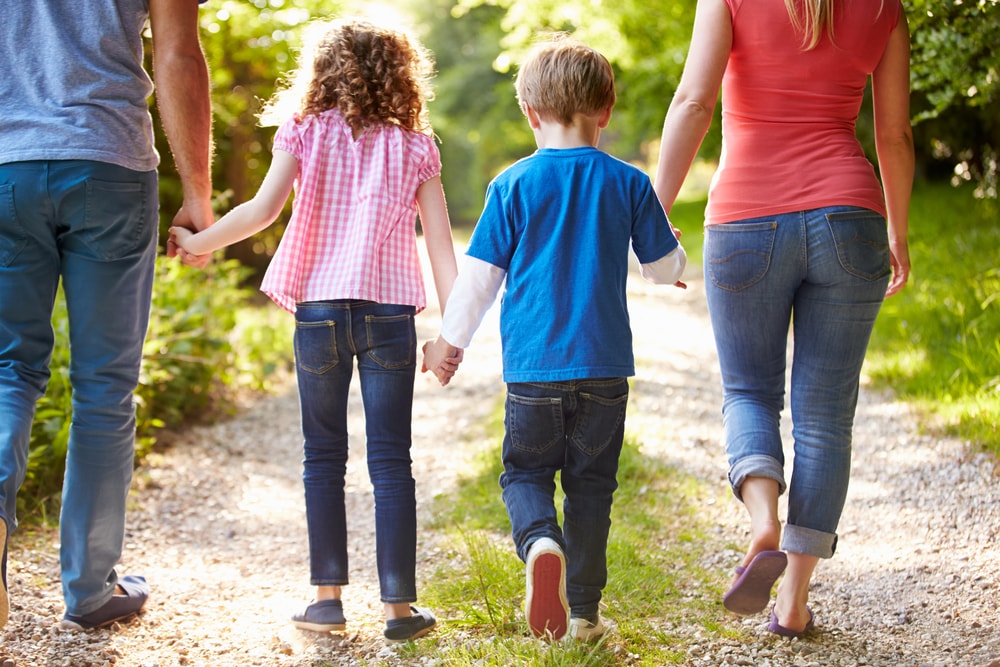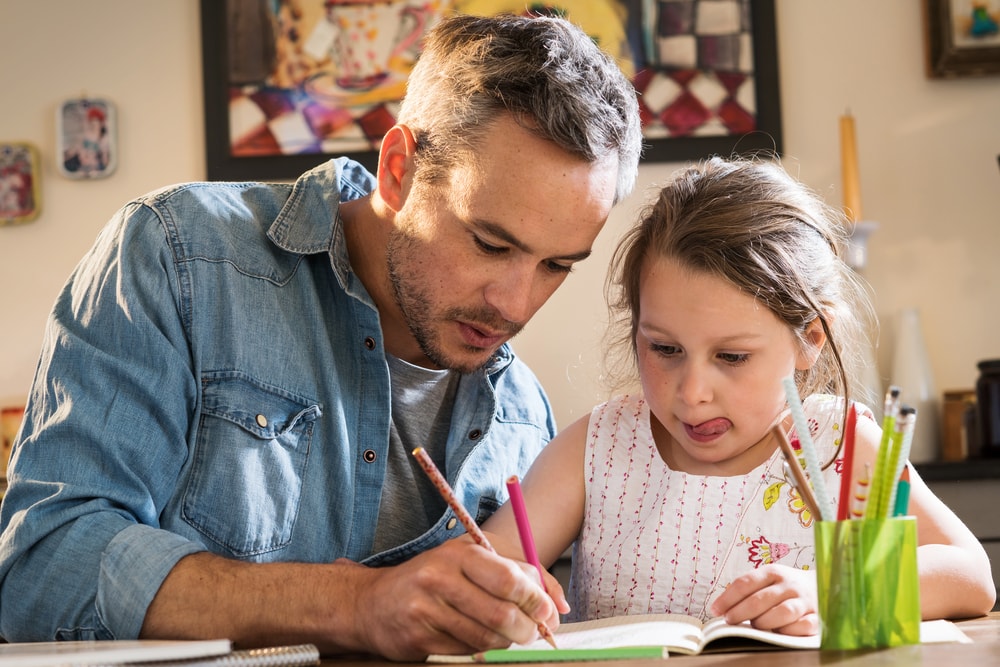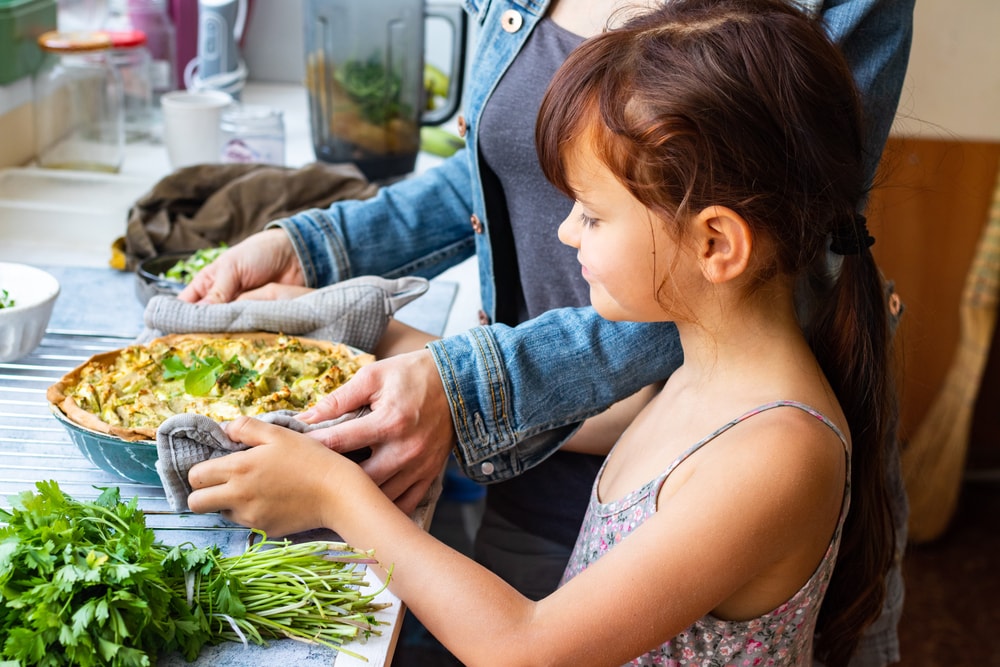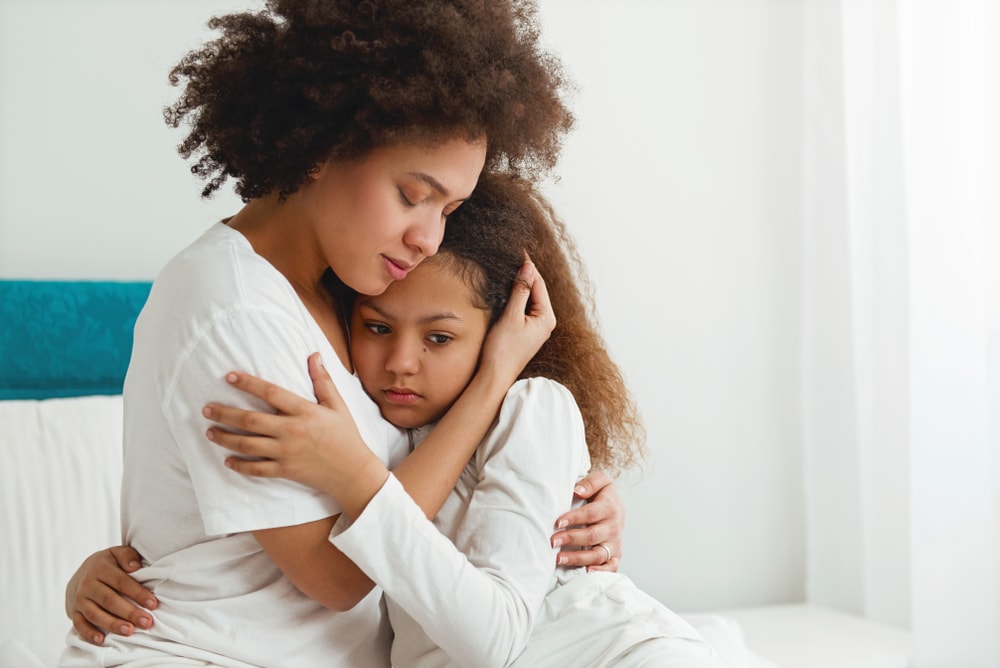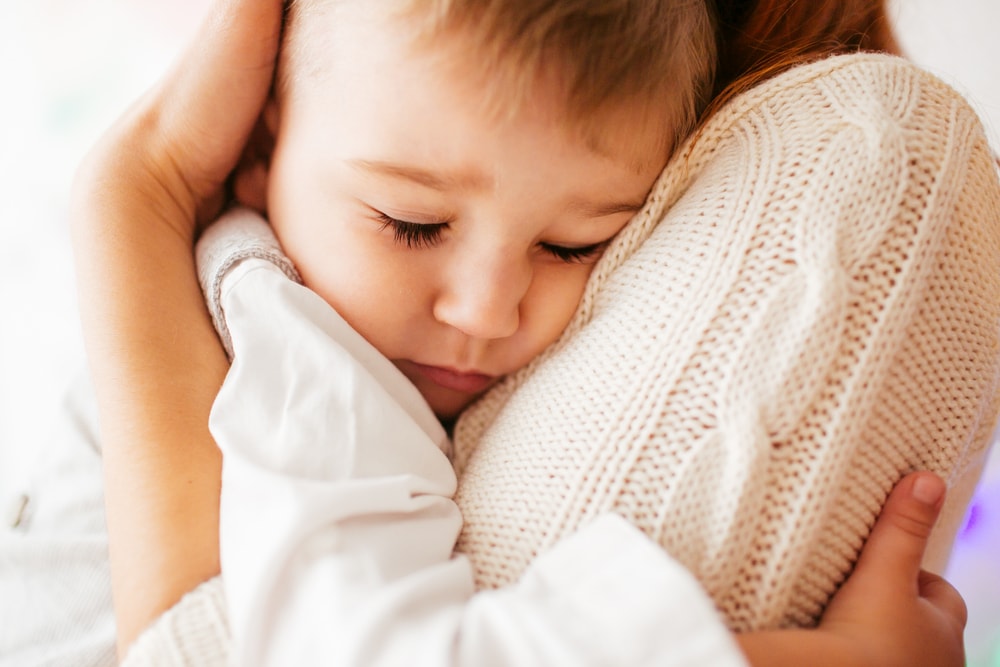From the moment we enter this life, the journey is full of ups and downs. Moments of happiness, excitement, and meaning intermixed with moments of pain, anger, regret, and grief. None of us were born knowing how to deal with the complex emotions we feel; we have to be taught. As children, we needed the adults in our lives to teach us how to respond to the difficult situations that life threw our way, like how to process grief. So, as you face the ups and downs of life, how are you helping your children create healthy grieving habits they can use as they grow up and face all types of loss?
A Parent’s First Impulse
Before we move into a few helpful tips, it’s important to acknowledge that your first impulse as a parent or caregiver may be to protect your child from the pain of loss. While this desire comes from a good place, try not to give into it. Your child doesn’t need you to make the battles of life go away. Instead, they need you to give them the tools to fight the battle for themselves, to process what they feel, to talk it out, to steadily discover the way to healing. In other words, none of us can run away from the tough things in life.
Dr. Alan Wolfelt, a nationally respected grief counselor, author, and educator who has companioned hundreds of families and individuals through the grief journey, puts it this way:
You might fall into the common thinking of our society that denying these feelings will make them go away. You might have the urge to “keep your chin up” and stay busy and wait to “get over” your grief. Yet, ironically, the only way to help these hard feelings pass is to wade in the muck of them. To get in and get dirty. Grief isn’t clean, tidy, or convenient. Yet feeling it and expressing it is the only way to feel whole, once again. Unresolved grief can leave you feeling “stuck” or empty. Your ability to engage in life could be inhibited and you might feel like you’ve shut down.
Instead, choose grief. And as you walk with your grief, actively mourn. By taking action, you will eventually integrate the death of your loved one into your life. In exchange, you will find the hope, courage, and desire to once again live a full and rewarding life.
In short, we must all learn how to deal with grief in healthy ways so that we can live full lives, and your child needs your help learning the skills to emotionally succeed. But how do you get started?
7 Tips for Teaching Your Child How to Process Grief
Much of what children learn, they learn through imitation. Meaning, they learn by seeing and mimicking that behavior. Have you ever had one of those moments when you hear or see your child express one of your own habits? It’s often a wake-up call for parents. They think, “Oh! I didn’t realize he picked up on that.” Just as your kids can pick up your not-so-great habits, they pick up your good habits, too. So, what can you do to help them pick up good grieving habits?
1. Teach them their feelings are normal
First of all, lay the groundwork that their grief emotions are natural, normal, and not to be feared. So many people suppress what they feel and don’t express what’s on the inside in healthy ways. Often, they leave their feelings unaddressed for so long that when they finally do come out, it’s an explosion of negative emotions.
Rather than letting it get to the point of combustion, teach your child healthy ways to express their emotions, especially those associated with loss. Whether it’s sadness, anger, regret, guilt, whatever – help your child understand that what they feel is normal and nothing to be ashamed or afraid of. They just need to find the right way to process and release those emotions.
2. Show them how to express their feelings in a healthy way
When you consider ways to process and release emotions in a healthy manner, it’s important to remember that every person is different. No two grief journeys are the same. What works for you may not work for your child. So, take their personality into account and explore different options until you both find one that fits.
A few ideas to start:
- Have your child draw a picture depicting what makes them sad and have them explain it to you
- Ask your child to write down what they feel or a favorite memory
- Create a memorial item together – a scrapbook, photo book, quilt, a stuffed animal using a loved one’s clothing, etc. Go to Creating Memorial Keepsakes from a Loved One’s Clothing, Creating Memorial Keepsakes from Funeral Flowers, or if you’ve lost a pet, go to 10 Family-Focused Pet Remembrance Ideas for more memorial ideas.
- Introduce specific arts & crafts that will help them identify the emotions they feel
- Read aloud age-appropriate books that discuss grief and loss
- Show children how to practice simple yoga moves or mindful breathing exercises to help them learn how to self-calm
- If their feelings are more explosive, look for safe physical ways to reduce stress, like running, playing chase, going to a batting cage or a golfing range, kicking a ball, etc.
Be an active participant in these activities with your child and help them learn how to express what they feel rather than pushing it away. With this habit in place, as they grow, they will understand the need to accept what they feel and look for ways to express it.
3. Take time to share stories and memories
An important part of the grief process is remembrance. Most often, this means telling stories, sharing memories, keeping special belongings, looking at photos, or watching videos. You may have noticed that when a person grieves, they share memories and tell favorite stories – maybe even the same ones again and again. This is all part of remembrance and transitioning the relationship from one of physical presence to one of memory. Encourage your child to share their memories and favorite stories. Listen with a compassionate and patient ear when they need you to simply hear what they have to say.
4. Demonstrate how to accept help
This one may be tough for some. You’ve likely had independence and self-reliance ingrained in you since your own childhood. In many ways, it’s great to be self-reliant, but it’s not always what you need. Accepting help from others doesn’t mean you aren’t capable of doing it on your own. It simply means that you understand that things can be easier if you don’t have to do it alone, and there’s nothing wrong with making things easier for yourself and your family.
So, as you face tough situations in life, accept help from those around you. That may mean accepting an offer to watch the kids, mow the lawn, run a few errands, or make a meal. Then, when your friends need help, give back. As you actively give and accept help, your child will notice what you’re doing. Invite them to be a part of it to cultivate the habit of giving and receiving help.
5. Tell them that grief takes time
Grief ebbs and flows, and in some ways, it never fully goes away. No matter how much time passes, some part of you will always miss the person who has died, and that’s natural. But in time, if you do the work of grief and express your pain in healthy ways, you will find a path to move forward.
It will look different from person to person. For some, grief lasts months, while for others, it lasts years. There are many factors at play, including the closeness of the relationship, the circumstances of the death, and the mourner’s personality. When grief and loss come into your family life – whether that’s a person, a pet, a friendship – use that moment to talk to your child and give them realistic expectations of the grief journey.
6. Answer their questions honestly
Have you ever met a kid who didn’t have a few questions? Asking questions comes naturally to them, so don’t be surprised if they have a lot to ask you about death, dying, grief, and more. Some questions you might be able to anticipate, while others may take you by surprise. No matter what, answer their questions honestly and simply.
It almost goes without saying, but don’t blanket over the truth about what happened with “white lies.” Children are naturally trusting, but if they find out later that you lied to them about something very important to them, you could damage their trust in you. In the same way, avoid euphemisms, as they just confuse children about what really happened. Instead, thoughtfully and sensitively answer them. They don’t have to know all of the details. You can decide what’s appropriate for their age and maturity, but always be completely honest. Children are much more resilient and understanding than we give them credit for.
7. Assure them that everything will be all right
Right now, in this moment, things may not be all right, but in time, they will be. Assure your child that the tough moments of today don’t create a dark future for tomorrow. Give them hugs and kisses. Provide the one-on-one time they need to feel secure and loved. Help them find ways to express what they feel.
Take one day at a time, one moment at a time. Life won’t go back to the way it used to be – that’s impossible – but it can still be good. That’s what the grief journey is all about: finding a way to reconcile yourself to the loss you’ve suffered, grieving the person you love, and discovering what life looks like now and how you can find new meaning and purpose.
These tips are intended to be building blocks for the years ahead. Just as it takes time for you to teach your child how to use silverware, interact in social situations, and make smart decisions, it will take time to impart these nuggets of truth about the grief journey. But in the end, your child will learn how to process what they feel in a healthy way and see hope for the future despite today’s difficulties.


